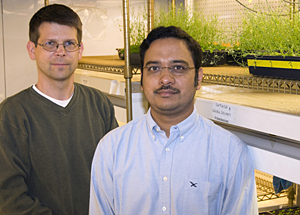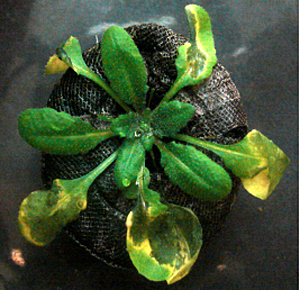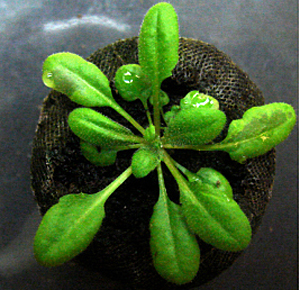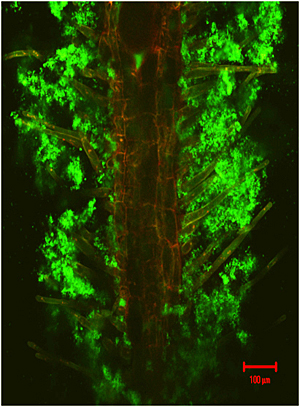



- Rozovsky wins prestigious NSF Early Career Award
- UD students meet alumni, experience 'closing bell' at NYSE
- Newark Police seek assistance in identifying suspects in robbery
- Rivlin says bipartisan budget action, stronger budget rules key to reversing debt
- Stink bugs shouldn't pose problem until late summer
- Gao to honor Placido Domingo in Washington performance
- Adopt-A-Highway project keeps Lewes road clean
- WVUD's Radiothon fundraiser runs April 1-10
- W.D. Snodgrass Symposium to honor Pulitzer winner
- New guide helps cancer patients manage symptoms
- UD in the News, March 25, 2011
- For the Record, March 25, 2011
- Public opinion expert discusses world views of U.S. in Global Agenda series
- Congressional delegation, dean laud Center for Community Research and Service program
- Center for Political Communication sets symposium on politics, entertainment
- Students work to raise funds, awareness of domestic violence
- Equestrian team wins regional championship in Western riding
- Markell, Harker stress importance of agriculture to Delaware's economy
- Carol A. Ammon MBA Case Competition winners announced
- Prof presents blood-clotting studies at Gordon Research Conference
- Sexual Assault Awareness Month events, programs announced
- Stay connected with Sea Grant, CEOE e-newsletter
- A message to UD regarding the tragedy in Japan
- More News >>
- March 31-May 14: REP stages Neil Simon's 'The Good Doctor'
- April 2: Newark plans annual 'wine and dine'
- April 5: Expert perspective on U.S. health care
- April 5: Comedian Ace Guillen to visit Scrounge
- April 6, May 4: School of Nursing sponsors research lecture series
- April 6-May 4: Confucius Institute presents Chinese Film Series on Wednesdays
- April 6: IPCC's Pachauri to discuss sustainable development in DENIN Dialogue Series
- April 7: 'WVUDstock' radiothon concert announced
- April 8: English Language Institute presents 'Arts in Translation'
- April 9: Green and Healthy Living Expo planned at The Bob
- April 9: Center for Political Communication to host Onion editor
- April 10: Alumni Easter Egg-stravaganza planned
- April 11: CDS session to focus on visual assistive technologies
- April 12: T.J. Stiles to speak at UDLA annual dinner
- April 15, 16: Annual UD push lawnmower tune-up scheduled
- April 15, 16: Master Players series presents iMusic 4, China Magpie
- April 15, 16: Delaware Symphony, UD chorus to perform Mahler work
- April 18: Former NFL Coach Bill Cowher featured in UD Speaks
- April 21-24: Sesame Street Live brings Elmo and friends to The Bob
- April 30: Save the date for Ag Day 2011 at UD
- April 30: Symposium to consider 'Frontiers at the Chemistry-Biology Interface'
- April 30-May 1: Relay for Life set at Delaware Field House
- May 4: Delaware Membrane Protein Symposium announced
- May 5: Northwestern University's Leon Keer to deliver Kerr lecture
- May 7: Women's volleyball team to host second annual Spring Fling
- Through May 3: SPPA announces speakers for 10th annual lecture series
- Through May 4: Global Agenda sees U.S. through others' eyes; World Bank president to speak
- Through May 4: 'Research on Race, Ethnicity, Culture' topic of series
- Through May 9: Black American Studies announces lecture series
- Through May 11: 'Challenges in Jewish Culture' lecture series announced
- Through May 11: Area Studies research featured in speaker series
- Through June 5: 'Andy Warhol: Behind the Camera' on view in Old College Gallery
- Through July 15: 'Bodyscapes' on view at Mechanical Hall Gallery
- More What's Happening >>
- UD calendar >>
- Middle States evaluation team on campus April 5
- Phipps named HR Liaison of the Quarter
- Senior wins iPad for participating in assessment study
- April 19: Procurement Services schedules information sessions
- UD Bookstore announces spring break hours
- HealthyU Wellness Program encourages employees to 'Step into Spring'
- April 8-29: Faculty roundtable series considers student engagement
- GRE is changing; learn more at April 15 info session
- April 30: UD Evening with Blue Rocks set for employees
- Morris Library to be open 24/7 during final exams
- More Campus FYI >>
11:39 a.m., Oct. 17, 2008----Researchers at the University of Delaware have discovered that when the leaf of a plant is under attack by a pathogen, it can send out an S.O.S. to the roots for help, and the roots will respond by secreting an acid that brings beneficial bacteria to the rescue.
The finding quashes the misperception that plants are “sitting ducks”--at the mercy of passing pathogens--and sheds new light on a sophisticated signaling system inside plants that rivals the nervous system in humans and animals.
The research was led by Harsh Bais, assistant professor of plant and soil sciences at UD, former postdoctoral researcher Thimmaraju Rudrappa, who is now a research scientist at the DuPont Co., Kirk Czymmek, associate professor of biological sciences and director of UD's Bio-Imaging Center, and Paul Paré, a biochemist at Texas Tech University.
The study is reported in the November issue of Plant Physiology and also is featured on the journal's cover. Rudrappa is the lead author of the research paper.
“Plants are a lot smarter than we give them credit for,” says Bais from his laboratory at the Delaware Biotechnology Institute.
“People think that plants, rooted in the ground, are just sitting ducks when it comes to attack by harmful fungi or bacteria, but we've found that plants have ways of seeking external help,” he notes.
In a series of laboratory experiments, the scientists infected the leaves of the small flowering plant Arabidopsis thaliana with a pathogenic bacterium, Pseudomonas syringae. Within a few days, the leaves of the infected plants began yellowing and showing other symptoms of disease.
However, the infected plants whose roots had been inoculated with the beneficial microbe Bacillus subtilis were perfectly healthy.
Farmers often add B. subtilis to the soil to boost plant immunity. It forms a protective biofilm around plant roots and also has antimicrobial properties, according to Bais.
Using molecular biological tools, the scientists detected the transmission of a long-distance signal, a “call for help,” from the leaves to the roots in the plants that had Bacillus in the soil. The roots responded by secreting a carbon-rich chemical--malic acid.
All plants biosynthesize malic acid, Bais explains, but only under specific conditions and for a specific purpose--in this case, the chemical was actively secreted to attract Bacillus. Magnified images of the roots and leaves showed the ratcheted-up defense response provided by the beneficial microorganisms.
Czymmek captured the definitive proof using a state-of-the-art LSM 510 DUO laser scanning confocal microscope in UD's Bio-Imaging Center. UD is among only a few universities that own one of these million-dollar instruments.
“A plant is a challenge to image because at least half of it is below ground in the form of roots,” Czymmek notes. “Here at UD, we use modern technologies including hydroponic growth systems with see-through chambers and sophisticated optical techniques that will enhance the image clarity when visualizing plants and the pathogens attacking them.”
Bais and his colleagues are now working to determine what the aerial signal is from the infected leaf to the root using different pathogen-associated molecular markers (PAMPs).
The research not only sheds light on the remarkable signaling system in plants, but also is important to understand how invasive plants conquer new territory with the aid of plant microbes.
“Plants can't move from where they are, so the only way they can accrue good neighbors is through chemistry,” Bais notes.
The research was funded by the National Science Foundation's Division of Integrative Organismal Systems, the University of Delaware Research Foundation and the Delaware Experimental Program to Stimulate Competitive Research (EPSCoR).
Article by Tracey Bryant


